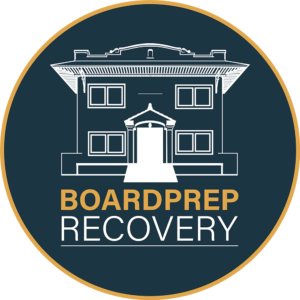Methamphetamine (“meth”), a highly addictive stimulant, is a drug that starts and fades quickly, giving rise to people taking repeated doses in a “binge and crash” pattern. Often, those who abuse meth or become chemically dependent on it will forego food or sleep to stay high, while continuing to take meth every few hours for sometimes up to several days.
According to the National Institute on Drug Abuse (NIDA), “(Meth’s) ability to rapidly release high levels of dopamine in reward areas of the brain strongly reinforces drug-taking behavior, making the user want to repeat the experience.”[1]
Once a person has used methamphetamine even just a time or two, the tendency to become addicted to it is extremely high. However, another major problem arises once dependency has begun: the person’s body will go into withdrawal as soon as they try to quit.
Withdrawal symptoms—see below—can begin showing up during or after “detox” — the human body’s natural process of metabolizing and removing the substance.
And the fact is, for most people withdrawal and detoxing from methamphetamines are often uncomfortable experiences, which contribute greatly to people not being able to quit using meth on their own. Even more than withdrawal from meth being unpleasant, the symptoms may endanger or end a person’s life. The experience of countless people seeking recovery from meth abuse or addiction has been that professionally monitored medical detox, carried out under the supervision of a doctor who is specifically trained in addiction medicine, makes the process much safer and smoother.
While there are numerous factors affecting the length of time and severity of a person’s withdrawal symptoms from meth (including how long they have been addicted), generally speaking they manifest in physical, mental and/or behavioral symptoms. Oftentimes intense and lasting for days or even weeks, most report it is a challenging, uncomfortable, even debilitating or harrowing experience.
The first symptoms typically start within 24 hours one’s last usage of the drug. Symptoms of withdrawal from meth include:
- Depression
- Anxiety
- Extreme tiredness/fatigue
- Severe headaches
- Confusion
- Visual or auditory hallucinations
- Aggression/anger
- Difficulty sleeping or sleeping too much
- Extreme hunger
It should be noted when one has used meth for a long period of time, it significantly lowers the amount of dopamine receptors in the brain, thereby making it difficult for the person to experience pleasure, a condition known as anhedonia, even after normal dopamine levels return. Many people who quit using meth experience anhedonia, which can last up to two years, even after they’ve stopped intake of the drug.
Still, it is often the combination of physiological and psychological symptoms that cause a person to relapse after trying to quit meth on their own, since they’re seeking relief from both intense physical discomfort and emotional distress. Given the psychological effects and dependency upon meth (from its use over time) are regularly extreme and extensive, a user will typically experience intense cravings for the drug soon after they attempt to quit.
Also, since meth withdrawal can last a long time—usually between 40 and 50 hours, depending upon the half-life of the drug and the quantity and length of time it has been abused—it may seem to be a slow, horrible process. However, recovery is possible… but trying to quit alone or within an environment with addictive triggers is not recommended at all.
Getting medical support and having a physician on hand during one’s detox, someone who is trained in addiction medicine and experienced in “tapering” one’s withdrawal from the drug—the process of lowering the dosage slowly over time—is the approach that ensures the safest, smoothest detox from dependency on methamphetamine.
To avoid the severity and dangers associated with meth withdrawal symptoms, a doctor at a detox center or treatment facility can help the person medically, by addressing the specific symptoms with specific medications. Medical treatment can help ease a person’s mood symptoms and prevent short-term physical symptoms, like tremors, nausea or vomiting.
A doctor and his/her treatment staff can also ensure the person stays hydrated and properly nourished with a balanced diet during their detox period. This, plus the emotional support of knowing a caring and experienced person is present and attentive to the patient’s needs, provides a superior approach to detoxing from meth.
After a person is finished with their initial withdrawal and detox process, it’s essential to develop—and follow through upon—a plan for further treatment. Detoxing from meth is certainly an important step in one’s journey of recovering from addiction. But the recovery process necessitates a person begin learning about both addiction and recovery, as well as one’s underlying conditions and life circumstances that have contributed to one’s addiction; adopting new, healthy attitudes and behaviors; and begins forming a network of supportive, understanding people (most often a group of fellow recovering addicts) who’ll help the person develop and sustain a new life based upon recovery principles.
[1] Methamphetamine DrugFacts | National Institute on Drug Abuse (NIDA)






